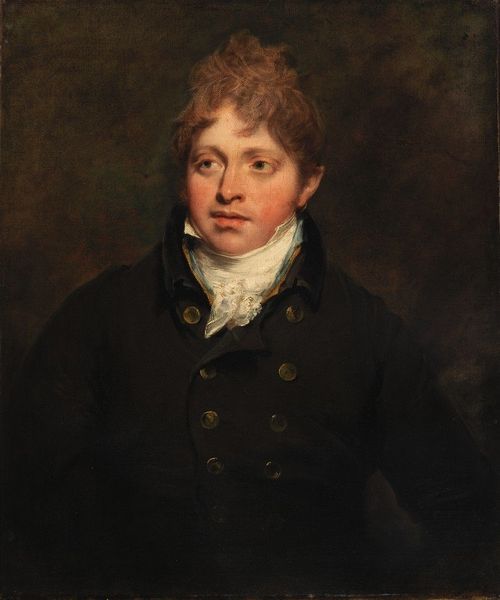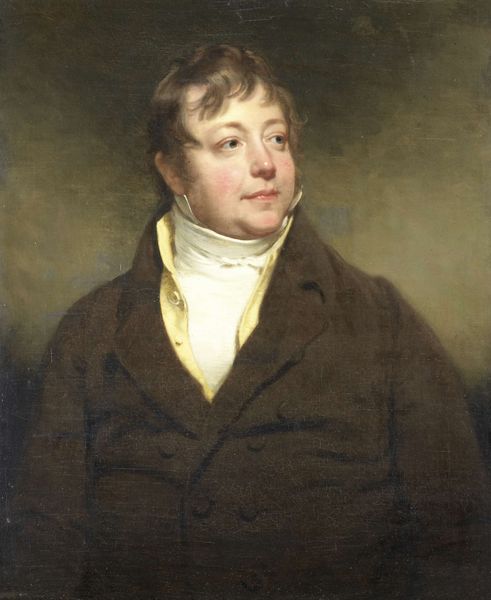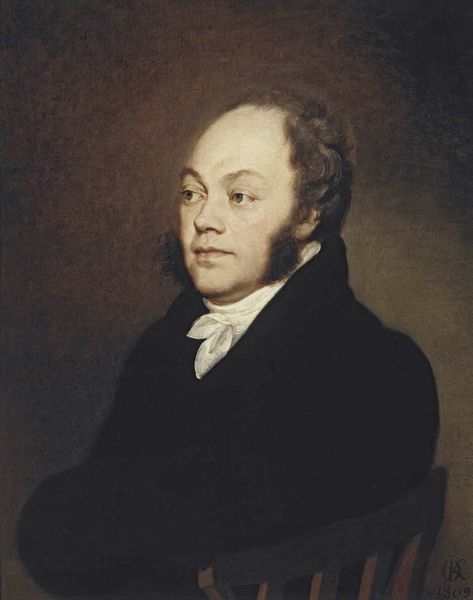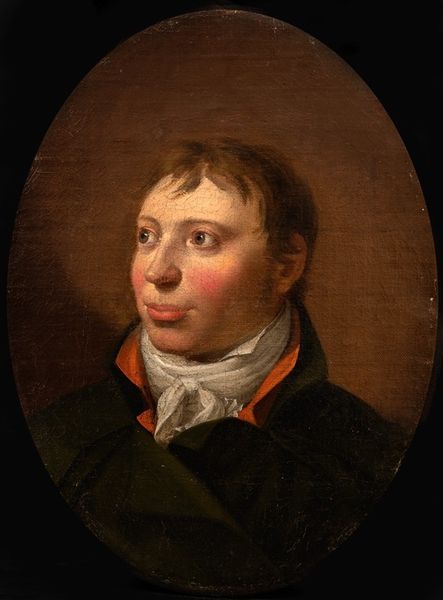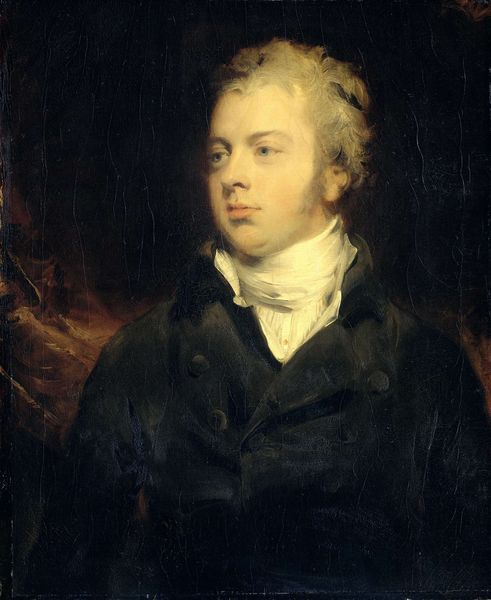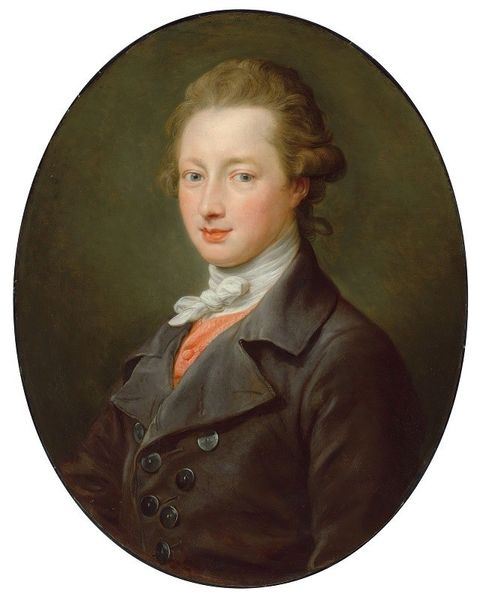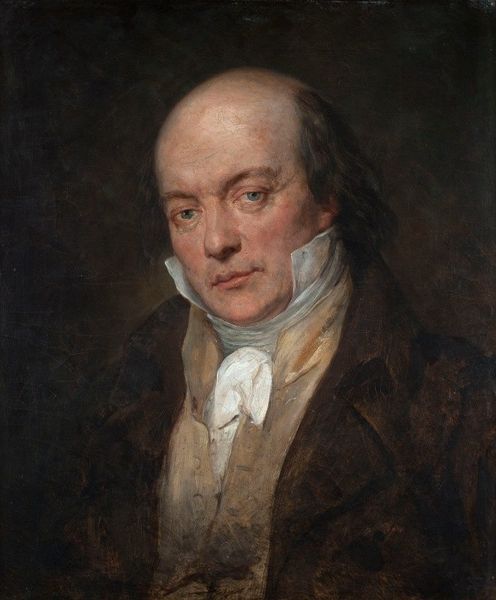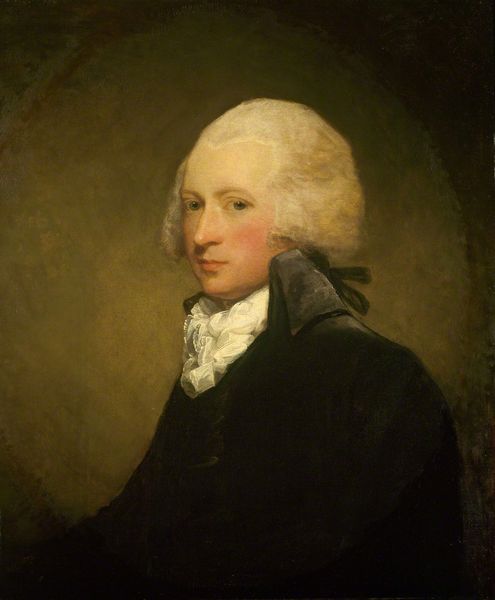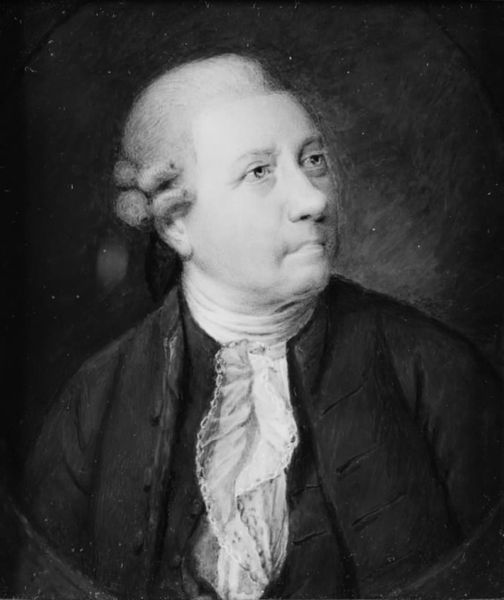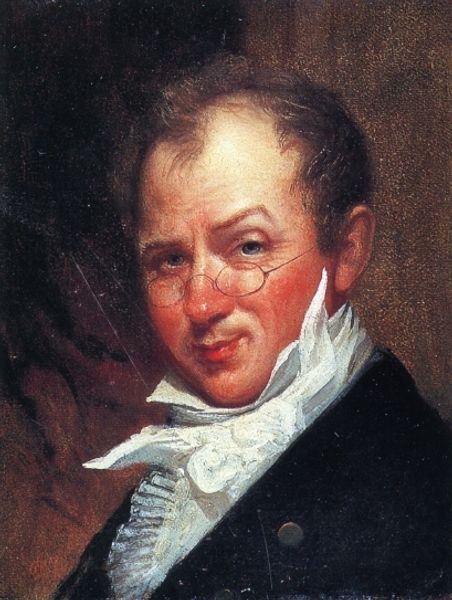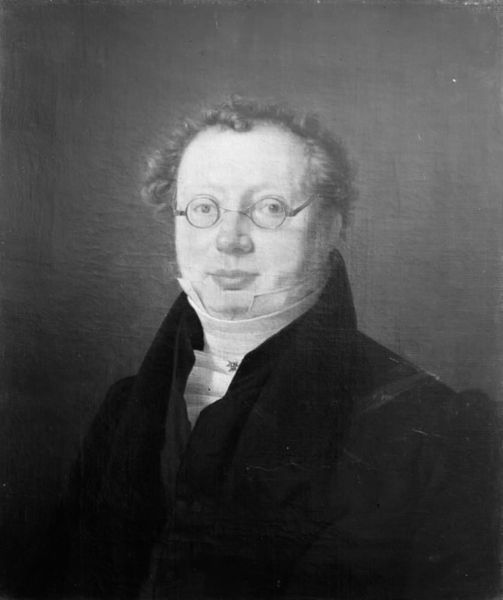
painting, oil-paint
#
portrait
#
portrait
#
painting
#
oil-paint
#
figuration
#
romanticism
#
academic-art
Copyright: Public domain
This is Thomas Sully’s portrait of William Warren. Notice how Sully uses the formal elements of portraiture to explore the relationship between the sitter’s inner character and his outward presentation. The composition is straightforward: Warren faces us directly, his figure occupying most of the canvas. Yet, Sully's brushwork is far from simple. Soft, almost hazy strokes define Warren’s face, lending him an air of approachability. The warm tones of his complexion contrast with the dark, almost brooding background, creating a visual tension. This tension is not merely aesthetic; it speaks to the broader cultural codes of portraiture. Traditionally, portraits were commissioned to project power, status, and a sense of permanence. However, here Sully seems to subvert these expectations. The soft brushstrokes and the subject’s somewhat quizzical expression suggest a more nuanced, less fixed identity. Consider how this approach challenges fixed notions of representation. Sully invites us to consider the role of the artist in shaping our perceptions of the subject. The portrait isn’t just a mirror reflecting Warren’s likeness; it's an interpretation, a construction of identity. The artist encourages a re-evaluation of how we perceive identity and representation.
Comments
No comments
Be the first to comment and join the conversation on the ultimate creative platform.
